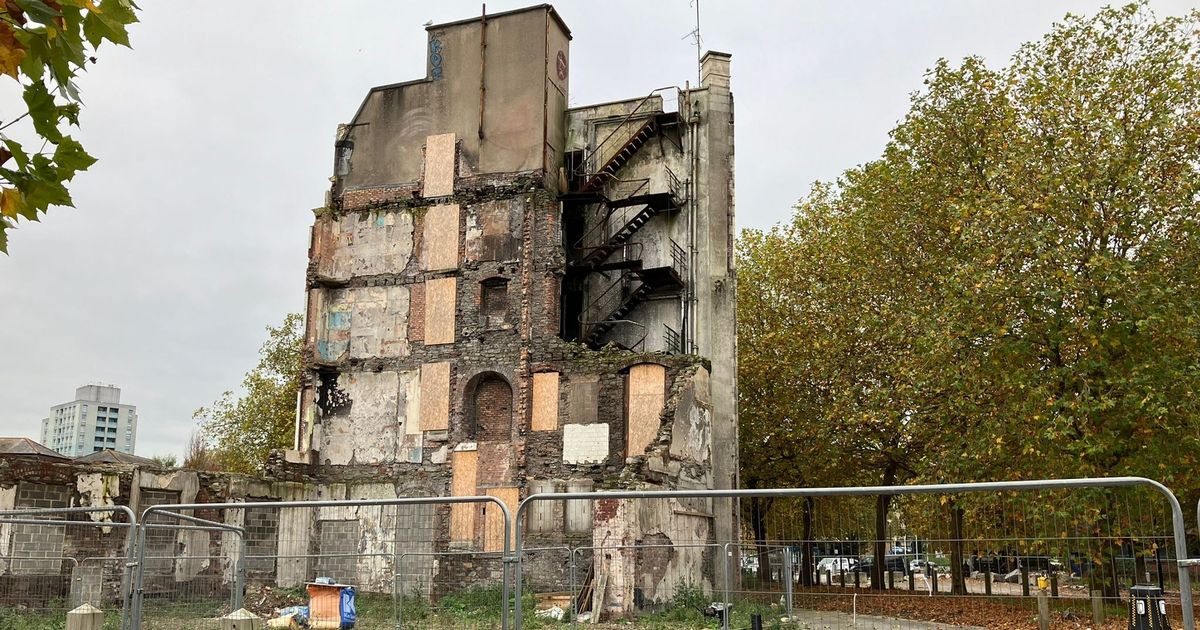The story of the Grosvenor Hotel is a long one Grosvenor Hotel has stood half-demolished since February 2024(Image: Bristol Live)
Grosvenor Hotel has stood half-demolished since February 2024(Image: Bristol Live)
It is one of the first things visitors arriving in Bristol see once they get off the train, or the airport shuttle bus, at Temple Meads and start to make their way to the city centre – a half-demolished building standing in a rubble-strewn empty site.
The Grosvenor Hotel, or what’s left of it, is one of the most notorious and controversial sites in Bristol, and its broken building hides a bizarre saga of decay, grudges, con artists, million pound jewellery and dramatic fires.
The building and the site itself is important. It sits alongside the completely covered up shell of the old George and Railway hotel next door, and the rusting husk of a long-shut down and boarded up petrol station, and for years those in charge of the city have said they intend to do something about all three, but have done nothing tangible at all.
All three sites now sit within the Temple Quarter Enterprise Zone, but while redevelopment and regeneration gathers pace on the ‘back’ of Temple Meads station to the east, around the ‘front’, on the city centre side, it appears the Grosvenor and the other two sites may well be the last places to be cleared and redeveloped.
Because, for all the positive words and decisions by successive ‘city leaders’ to do something, the Grosvenor Hotel site is still an eyesore, still a building that isn’t – half-demolished and waiting to be put out of its misery, with years of stagnation behind it and potentially years more to come.
Now, finally, after years of doing little with the site apart from stubbornly resisting any attempts, both inside and outside court, by Bristol City Council to sort out, refurbish, demolish or just sell the site, the hotel’s owner Nimish Popat has put it on the market.
READ MORE: The eyesore Bristol site finally for sale for £12mREAD MORE: ‘Clear up the mess!’ Anger at council as Grosvenor Hotel site is left to rot
Bristol Live reported that it is being marketed for offers in excess of £12 million, with optimistic words about student flats or a hotel rising from its rubble-strewn ashes.
It remains to be seen whether anyone will pay that much for what is admittedly a fairly small but prime location at the city centre gateway to one of Britain’s most prosperous cities, but if they do, another chapter in the Grosvenor Hotel saga will surely follow. And it has been a saga and a half.
The hotel years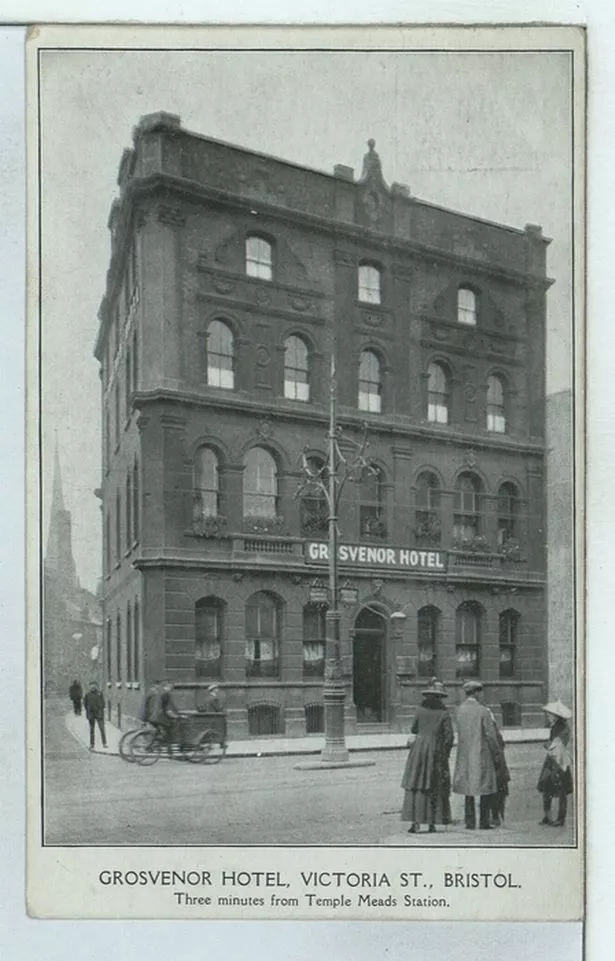 (Image: Bristol Live)
(Image: Bristol Live)
Built in 1875, it was designed by renowned architect SC Fripp – Brunel’s assistant who had already designed the chapel at the Bristol Royal Infirmary. It opened into a world where people would arrive at Temple Meads and take one of the 70 rooms as they either prepared to travel on to North America, or visited or did business in Bristol itself.
The hotel was, in its early heyday, seen as quite luxurious. A striking curved rear extension was built in the 1930s, and the basement bar was one of the hippest places to frequent in the city. It survived the blitz and the large-scale post-war clearances that transformed the area of Redcliffe and Temple into the modern landscape of office blocks and dual carriageways we see today.
But by the 1970s and 80s, the hotel found itself next to a flyover, in a world where most people drove rather than took a train to Bristol, and the hotel began its slow descent. By the end of the 1980s, a plan to convert it to offices didn’t come off, and in the early 1990s, its rooms were taken over by the city council to house homeless people and families. It officially closed as a hotel in 1993, and limped on for another five years as a homeless hostel run by the English Churches Housing Group.
The empty years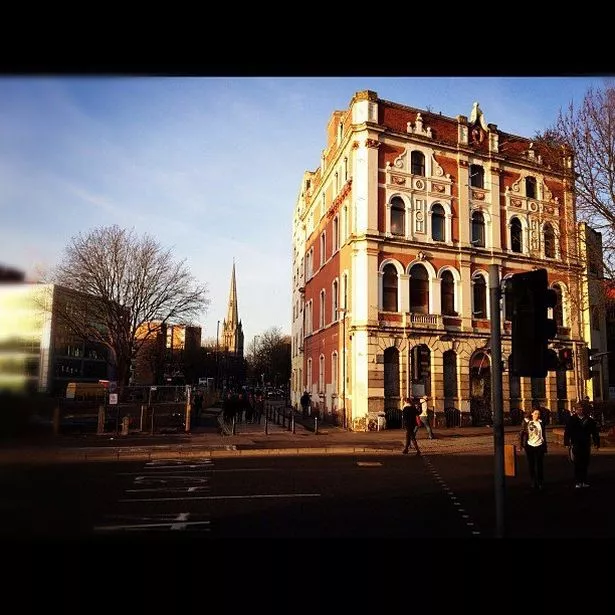 (Image: Bristol Live)
(Image: Bristol Live)
After it closed for the last time, it was bought by Earlcloud Ltd, a property company now run by Nimish Popat. And so began what is now 25 years of wrangling between Bristol City Council and Earlcloud. The council first began talking about a Compulsory Purchase Order as far back as 2008, and ever since then, the Grosvenor Hotel site has been the subject of something of a cycle of events right the way through the 2010s.
The cycle went like this: Developers came forward with planning applications to demolish both the Grosvenor and the Midland and build office blocks, but the city council’s planners turn the applications down. Then, the city council leaders decide that this time they really are going to pursue a Compulsory Purchase Order, balk at the price, and another developer comes along with a new plan that again gets turned down.
The student flats con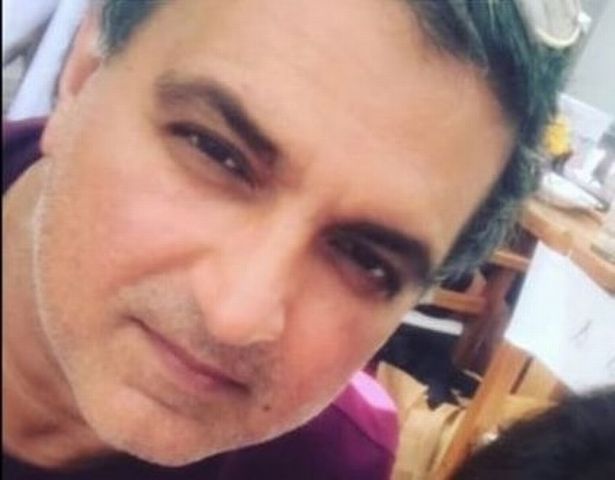 A screenshot of a post on Instagram by Sanjiv Varma in February 2020, taken at the Nikki Beach resort in Dubai(Image: Sanjiv Varma/Instagram)
A screenshot of a post on Instagram by Sanjiv Varma in February 2020, taken at the Nikki Beach resort in Dubai(Image: Sanjiv Varma/Instagram)
After all the failed plans and years of trying and failing to persuade or force Earlcloud to sell, in around 2016 or early 2017, Rightmove, Zoopla and a series of well-respected Bristol estate agents like Harbourside Property Group, began listing and marketing student flats on the site of the Grosvenor Hotel.
The man behind the project, called Grosvenor Student Accommodation, was an Indian businessman called Sanjiv Varma. The plan was to turn the Grosvenor into 144 student flats, but rather than have them owned and run by a student accommodation provider – as all the student accommodation now springing up around Temple Meads is – each flat was for sale for £99,000, with investors told they’d get a healthy return on their money.
READ MORE: Bizarre history of fire-hit Grosvenor Hotel from missing millions to a passport-eating dogREAD MORE: Grosvenor Hotel property conman jailed for 21 months
The involvement of legitimate property investment firms and lawyers had convinced many it was too good an opportunity to miss and dozens of people handed over £50,000 per unit. A number of people had poured their life savings into the project yet work on the student flats never began.
The reality was Sanjiv Varma was selling student flats that didn’t exist in a building he didn’t own, and didn’t have planning permission for, nor was he ever likely to.
After a couple of years Varma went AWOL, and much to the investors’ frustration, neither Scotland Yard nor Avon and Somerset Police began a criminal investigation. It was left to the Insolvency Service to mount a proper investigation, tracing the money and prosecuting Varma when they discovered he’d been lying to them.
He’d effectively spent as much as £9 million on a lavish lifestyle. He was prosecuted and convicted, not of the fraud itself, but of contempt of court for not assisting the investigation and lying to the judge, and given a prison sentence, but despite appearing via Zoom in the Covid-times court hearings, he was already gone – Bristol Live tracked him to Dubai, where the liquidators had already traced most of his money.
Dereliction and fire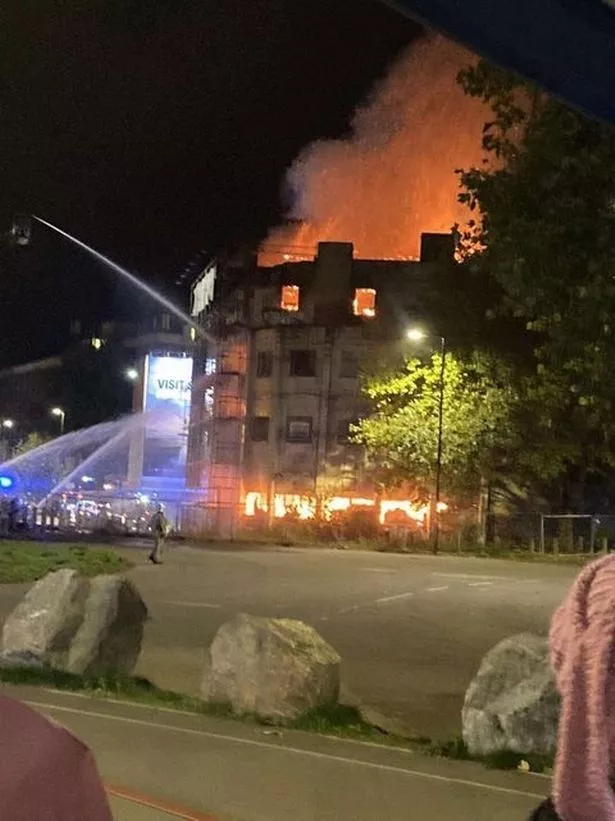 The fire at the Grosvenor Hotel in Bristol (Image: Nadeen Sultaan/ submitted)
The fire at the Grosvenor Hotel in Bristol (Image: Nadeen Sultaan/ submitted)
In the years since the student flats debacle, the Grosvenor continued to decay. It was an infamous eyesore that attracted only three things: urban explorers; homeless people looking for a roof over their head and council chiefs pledges that this time, really and truly, they would enforce a Compulsory Purchase Order.
Then, in October 2023, the building went up in flames. The blaze badly damaged the roof and structural experts said it was now in a perilous state. The council set up an exclusion zone around it, and had to take Earlcloud to court several times to try to get a court order to, at first, make the building safe, and then if that wasn’t going to happen, to demolish it.
Demolition – sort of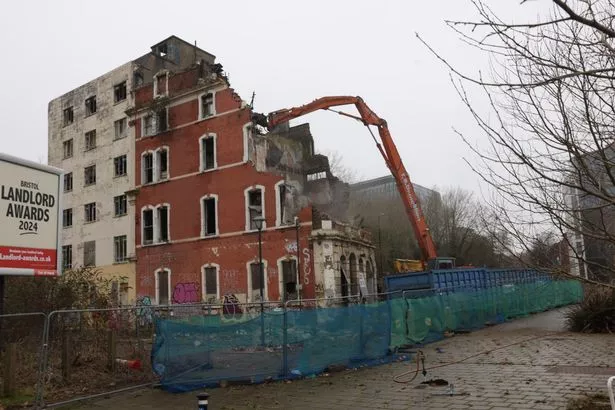 Grosvenor Hotel demolition in progress(Image: Bristol Live/ Paul Gillis)
Grosvenor Hotel demolition in progress(Image: Bristol Live/ Paul Gillis)
After months of court hearings, scaffolding going up and down, and frustration because the exclusion zone shut an important bus lane on Temple Way, the demolition crew got to work in the first weekend of February 2024. The arrival of the demolishers was quickly hailed by the then Mayor of Bristol, Marvin Rees, as another example of his administration ‘getting stuff done’, but Mr Popat and Earlcloud had one last laugh.
READ MORE: The saga of the Grosvenor Hotel is an embarrassment and a joke to BristolREAD MORE: Reopening 20 yards of footpath after two years was ‘complicated’ says council chief
The fire-damaged original front of the hotel was demolished, but the 1930s rear extension was left intact, now an extension to a building that didn’t exist anymore. Earlcloud had fulfilled the minimum requirement of the court order to make the site safe, and the exclusion zone could now be lifted, the road and the path reopened – eventually. By April, the city council admitted it could do no more, the rear half of the hotel building was there and there was little if anything the council could do about it.
A billboard
In the autumn of 2024, the council planners finally granted planning permission for something to happen to the Grosvenor Hotel. But it wasn’t a 17-storey block of student flats, or a shiny smoked glass office building. Earlcloud asked for permission to turn the exposed face of what was left of the building into a giant advertising billboard, and the council said yes. So scaffolding was erected, and earlier this spring, the first large advert was created on the mesh of scaffolding poles.
